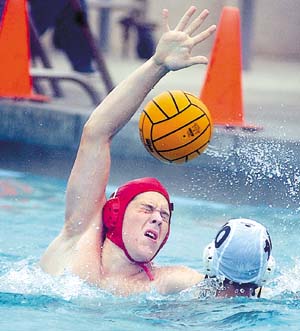San Benito County’s seven rural school districts posted
dramatically higher scores on state and federal accountability
rating systems for 2004
–2005 compared to their larger counterparts.
Hollister – San Benito County’s seven rural school districts posted dramatically higher scores on state and federal accountability rating systems for 2004–2005 compared to their larger counterparts.
Four districts exceeded state target scores while six of the seven met federal accountability requirements.
Many rural district officials credit small class sizes and dedicated teachers for the improvements. However, fewer discipline problems and close community relations also help many rural districts achieve high performance standards, officials said.
Of the seven rural districts, Bitterwater-Tully showed the most dramatic improvement and posted the highest Academic Progress Index (API) score of all 10 county school districts, according to results released by the California Department of Education last week.
California’s accountability requirements are reported in terms of Academic Performance Index (API) criteria to measure the improvement of schools and districts on a year-to-year basis. Each year, schools and districts are given a minimum growth target, which varies from school to school and is based on scores from the beginning of the year.
API scores range from 200 to 1,000, and the statewide target for all schools is 800. Bitterwater-Tully, which has 28 students enrolled this year, jumped 75 points on the API from 815 in 2003–2004 to 890 last year. Only 27 percent of schools statewide were able to meet the state target score of 800.
Bitterwater-Tully Principal and Teacher Tim Williams was impressed by the results.
“(These achievements are) a combination of small class sizes and parent-teacher relationships,” Williams said.
Because of the school’s size, parents and teachers have open lines of communications. Whether a student is performing exceptionally or poorly, his or her parents will be informed, Williams said.
The school’s two teachers also employ several “old-fashioned” teaching methods, Williams said.
For example, students studying grammar and spelling are often drilled repetitively. In past years, Williams has even held weekly test preparation sessions to help students become more familiar with the test-taking process and learn important test-taking skills.
A supportive community and very few discipline problems have also contributed to the school’s success, Williams said.
In similar fashion, federal accountability requirements are reported in terms of Adequate Yearly Progress (AYP) criteria to measure academic success according to how well it meets common performance targets.
Under the 2001 No Child Left Behind Act, schools must meet annual AYP targets, which increase over time, so that in the 2013-2014 school year, 100 percent of students throughout the country are expected to score at the proficient level or above.
Of the seven rural San Benito County districts, only North County Joint Union District failed to meet federal AYP requirements. North County is by far the largest of the seven rural districts, serving nearly 550 students.
Although the district failed to meet AYP requirements, Superintendent and Principal Howard Chase said he was pleased with both API and AYP results. North County improved 32 points – from 688 to 720 – on the API last year, which Chase said was a result of dedicated teachers and a school-wide belief that every students can achieve high academic standards.
“Every year there is a new baseline,” Chase said. “And every year our goal is to improve.”
In order to improve test scores and district accountability results, Chase said North County will continue to focus on state curriculum standards and make sure every student is given the opportunity to improve in specific areas of weakness.
Chase believes that both the API and AYP results show that the district has made “tremendous gains.”
“The credit all goes to the teachers,” Chase said.
Southside School District, the second largest of the seven rural districts, also made significant gains this year. Although the district had already achieved that statewide API target of 800 during the 2003-2004 school year, scores increased again last year, jumping 17 points from 827 to 844.
Southside, which serves 277 students, has reaped the rewards of small class sizes, Principal Eric Johnson said.
“The numbers are really the main factor,” Johnson said. “The lower you can get your class sizes, the better.”
Johnson believes the school’s success is due, in part, to dedicated teachers, parent involvement and hard-working students, but he knows the school can improve.
“We need to do better all of the time because its a constantly changing world,” Johnson said.
Both Jefferson and Panoche school districts met federal AYP standards, but the California Department of Education could not calculate API scores for either district, according to Robert Bernstein, an analyst at the Educational Planning and Information Center (EPIC), part of the Evaluation and Policy Division of the California Department of Education.
Bernstein said the data submitted by Panoche would not be statistically significant because the school had fewer than 10 students enrolled last year. Results for Jefferson could not be calculated because the information submitted to the California Department of Education was inaccurate.
a
Brett Rowland covers education for the Free Lance. He can be reached at 831-637-5566 ext. 330 or br******@***********ws.com










